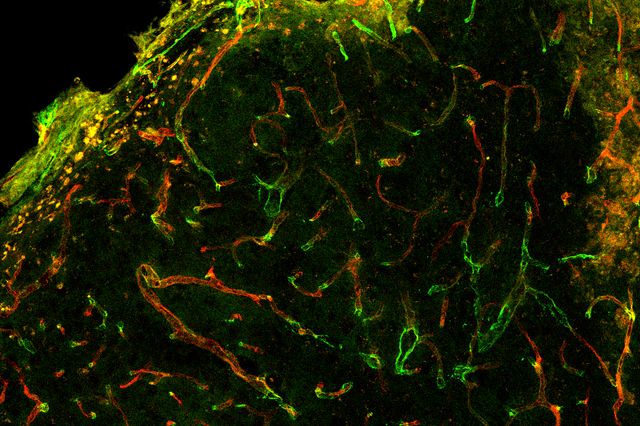UCLA researchers have developed an injectable gel that shows promise in encouraging tissue repair, especially in areas of the brain damaged by stroke. Typically, injured areas are healed by the body in a process that relies on a type protein called integrins.
Integrins help new cells move to where they need to be for repair and stick to the extracellular matrix to complete repairs. However, after a stroke, this repair process does not occur in damaged brain matter. Researchers hope the new hydrogel can change that by supporting the regeneration process.
Previous injectable gels have failed to properly support the required blood vessels for repair. Often the blood vessels clump together or are weak and leaky. But the new gel from UCLA was developed after close study of the integrin binding molecules key to repairing with new cells. The details of the full study were published in Nature Studies.
The new hydrogel combined with an integrin called α3/α5β1 was able to not only support newly grown blood vessels but also direct their growth. In mice studies, the new blood vessels were able to connect with existing vessels and were stronger than in previous tests with other materials.
According to Dr. Thomas Carmichael from the David Geffen School of Medicine at UCLA and a collaborator on the paper, this material could possibly regenerate stroke injured brain tissue by restoring blood vessels to the area. Next, testing will continue with α3/α5β1 and other hydrogels to find the most effective post stroke treatment.
More News to Read
- Disney has Developed a Software That Makes it Easy to Animate Characters
- Take A Closer Look at Bacterial Biofilm Machines
- Research Confirms Diabetes is Linked to Problems the Oral Microbiome
- New Observation Results of the Sun Surprises Astronomers
- Most Accurate Measurements of Dark Matter and Dark Energy Revealed by Dark Energy Survey

